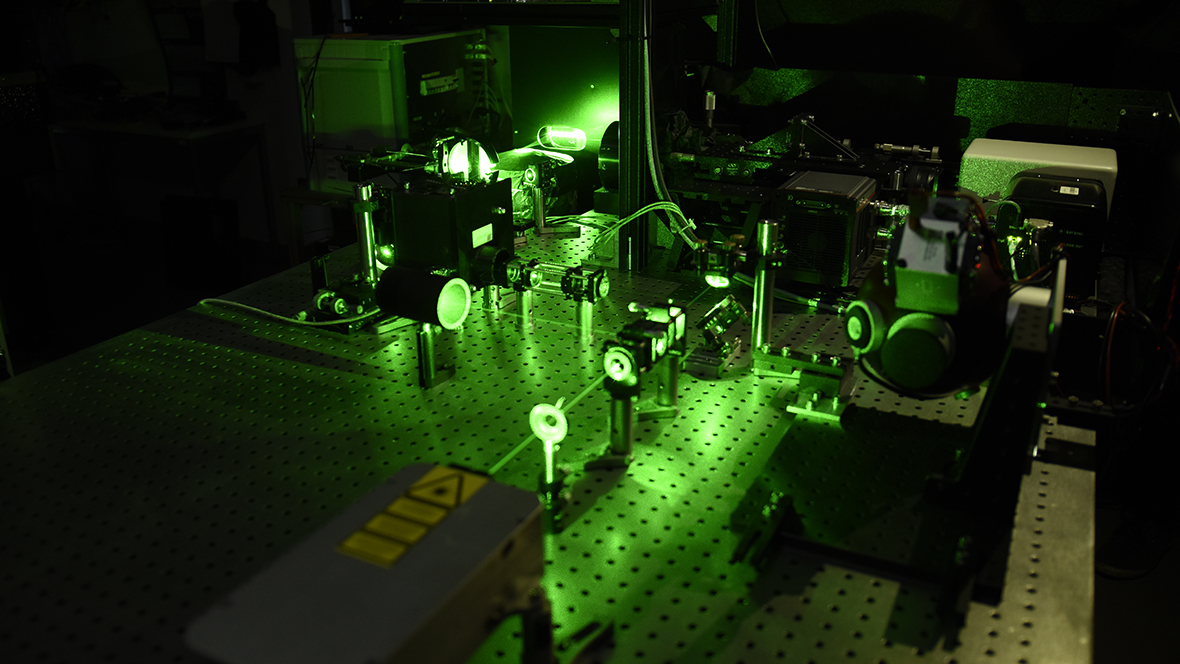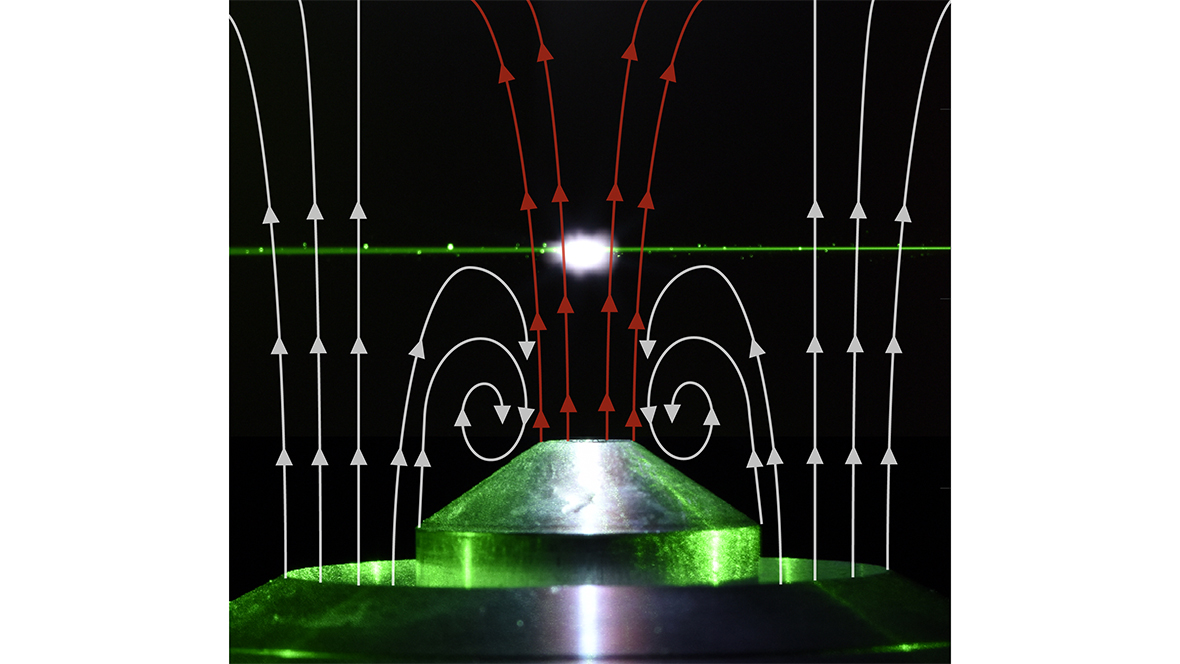In thermo-chemical reduction, porous microparticles of iron oxides are reduced with green hydrogen to porous microparticles of pure iron. The thermo-chemical oxidation of the iron particles with atmospheric oxygen to iron oxide particles represents the complementary process and closes the cycle. For reduction and oxidation, the reactions and their coupling to transport processes must first be understood for individual particles. Rate determining processes are heat and mass transfer between particles and the surrounding gas phase as well as the kinetics of the heterogeneous particle surface reaction. These processes are strongly influenced by the ambient conditions (temperature, composition of the gas atmosphere) and the particle properties (particle size, porosity, etc.). Accordingly, a spatially and temporarily resolved analysis of the iron and iron oxide particles elemental composition up to the highest process temperatures at various ambient conditions is required for model validation and to improve the understanding of the processes.
In this subproject, a diagnostic method will be developed in an exploratory approach, which should enable within a probe volume of approx. 1 mm³ a time-resolved in-situ analysis of the elemental composition of iron and iron-oxide particles in flow reactors. Laser-induced plasma spectroscopy (LIBS) will be employed due to it’s in principal high sensitivity. In LIBS, focusing a pulsed laser beam onto the particle surface results in absorption of the laser light and the subsequent ablation of a quantity of mass depending for instance on the laser pulse energy. A high temperature plasma is formed from the ablated material above the particle. Continuum light is emitted during the early stage the plasma cooling process while discrete atomic lines are emitted at later times. The latter ones contain the information on the elemental composition. LIBS has been widely applied to solid surfaces while applications to particles and in particular to single particles in high temperature flows have been extremely sparse. One reason for that is the small signal to noise ratio of the analytical signal obtained from time-resolved single-shot experiments in flow configurations.
Accordingly, the experimental parameter which might enable single-shot experiments for particle diagnostics have to identified in a parametric approach and a corresponding data evaluation scheme has to be developed. Quantitative analysis of aerosol particles by LIBS requires an analysis of the relevant physical processes, namely heat and mass transfer during the ablation, which govern the dissociation, vaporization, ionization and ultimately the atomic excitation, of analyte species. These same processes play key roles in particle-related matrix effects, affecting quantitative analysis. Particles up to ~10 µm have been analyzed by LIBS since these can be ionized. For larger particles, as relevant in Clean Circles, ionization is possible might be only possible for a fraction of the particle. Hence, the elemental analysis of particles larger than 10 µm and in particular single particles is uncharted territory and has to be explored in parametric investigations.
Scientific questions:
- Which experimental setup and which experimental parameter of the diagnostics reveal the potential to allow for single shot particle measurements?
- What is the maximum particle size that can be fully ionized, which fraction of the particle can be ionized for larger diameters, what can we learn from the elemental composition if only fractions of the particles are ionized?
- What are the best strategies to allow for a robust calibration of the LIBS system in dependence of process parameters like particle diameter, shape and morphology?
- Which data evaluation schemes do provide the most robust elemental composition information and what are the lower detection limits in single particle diagnostics? How can this be compared to the results from Mössbauer spectroscopy?
- Are there approaches which allow for a diagnostics of the particle surface only?
- How can LIBS be coupled with other diagnostics which provide simultaneous information for instance on the flow field?






